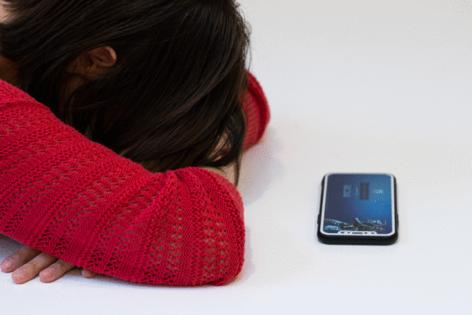Parents alone can't protect kids from social media
Published in Lifestyles
Children today are growing up immersed in a digital world that is taking a toll on their mental health. Many parents know it’s a problem but don’t know how to fix it. The problem is too big.
Social psychologist Jonathan Haidt offers a prescription in his new book, "The Anxious Generation: How the Great Rewiring of Childhood is Causing an Epidemic of Mental Illness." Haidt provides a necessary data-driven argument against a phone-obsessed childhood. But his most immediate solutions rely heavily on the collective will of parents to change course — a tacit acknowledgement that societal solutions are unlikely to arrive in time for this generation. Parents need more help.
Haidt makes the case that we’ve put bubble wrap around kids in the real world, while recklessly throwing open the floodgates in the virtual world. That deprives kids of the resilience and emotional fortitude that comes from healthy risk-taking in real life. He argues that boundary testing is increasingly rare even in spaces designed to encourage it, like playgrounds, and that kids are no longer granted the freedom to roam and develop the independence needed for a timely transition into adulthood. Meanwhile, they are allowed to wander the wilds of the internet and social media without sufficient supervision or boundaries.
Put together, it’s a recipe for the current teen mental health crisis. Borrowing heavily from the research of psychologist Jean Twenge, Haidt lays out the evidence that the arrival of smartphones coincides neatly with a sharp rise in anxiety and depression (most pronounced in girls) and a drop in in-person connectivity (most pronounced in boys).
Anyone trying to parent an adolescent or teen will likely find themselves vigorously nodding along. By now, we’ve all seen the alarming data reflecting a more anxious, isolated youth: 1 in 5 teens say they are almost constantly on YouTube or TikTok, nearly 1 in 3 teen girls say they’ve seriously considered suicide in the last year, and Gen Z spends far less time hanging out with their friends than Millennials, Gen Xers or Boomers did.
The big question is: What to do about it?
Haidt offers a long list of remedies targeted at various institutions, like schools, governments and social media companies.
But his most pointed prescription is for parents: “Supervise less in the real world but more in the virtual — primarily by delaying immersion.” What does that mean? Give kids more freedom to roam, allow no phones until high school, and bar social media until age 16.
He's tuning into a movement already afoot. My colleague, Parmy Olson, recently wrote about UK parents banding together to delay cell phone use. A similar movement in the US called “Wait Until 8th” asks groups of parents to pledge not to give their child a phone until 8th grade, around the time most kids are 13 or 14.
As a parent who has drawn a firm line in the sand on social media and smart phones, I sincerely hope these efforts gain traction. I often think about something that Mitchell Prinstein, the chief science officer of the American Psychological Association, told me last year, after the APA issued its first advisory on social media use in adolescence: “We have no data to say kids will suffer social consequences by being offline.”
...continued
©2024 Bloomberg L.P. Visit bloomberg.com/opinion. Distributed by Tribune Content Agency, LLC.







Comments